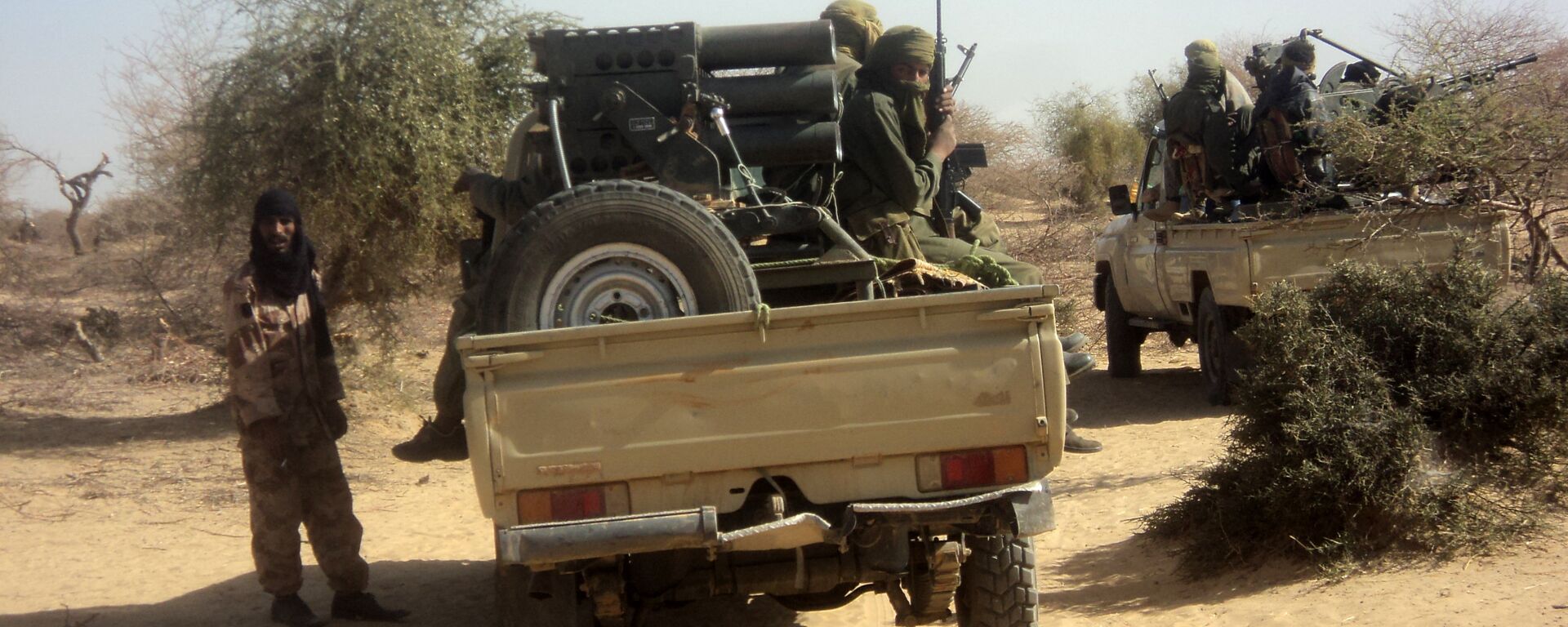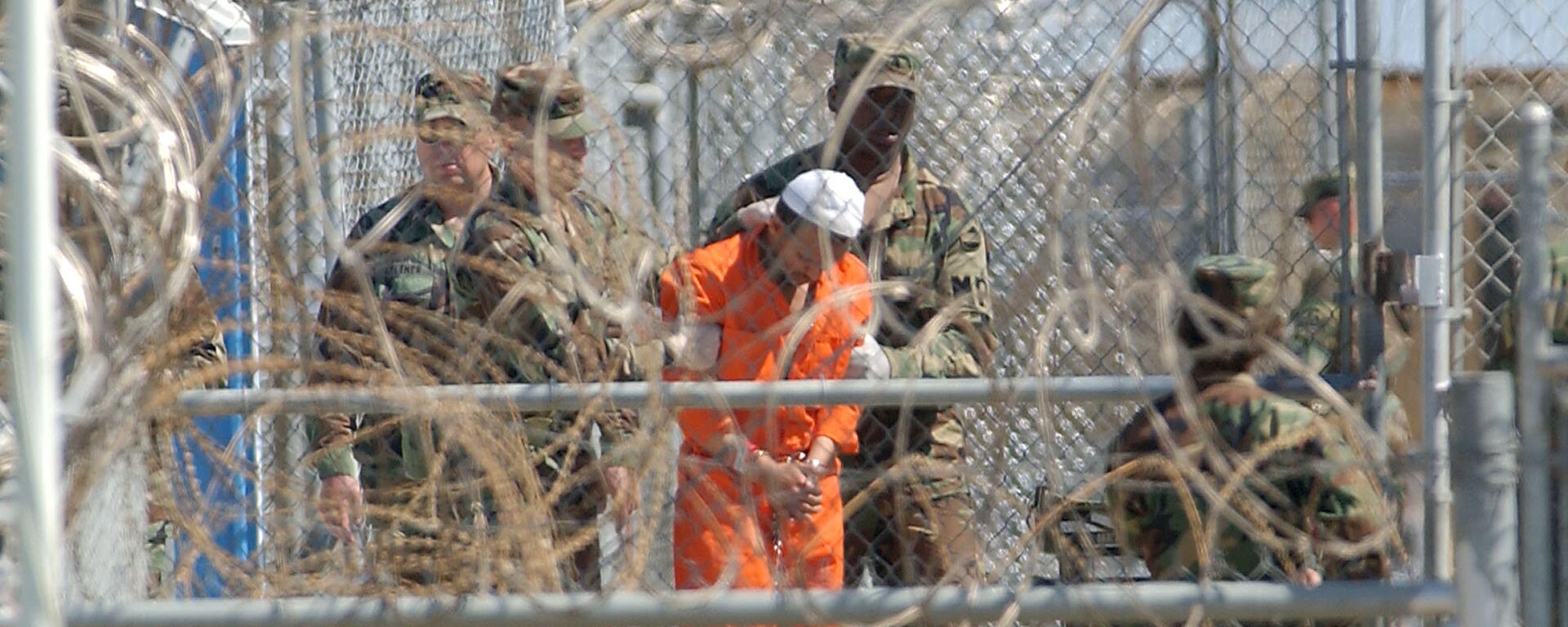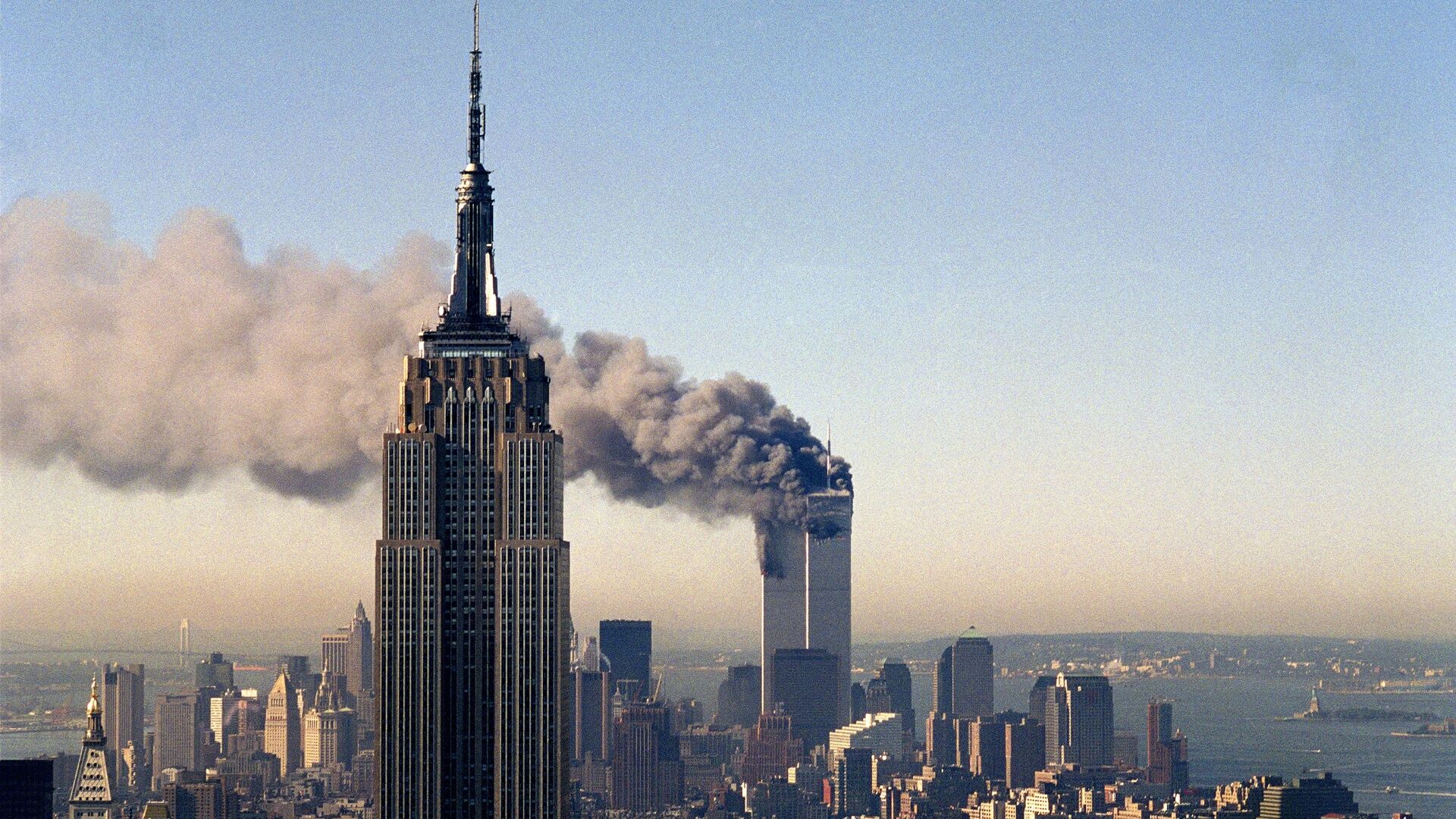https://sputnikglobe.com/20210910/new-yorks-twin-towers-symbol-of-capitalist-might-laid-low-in-911-attacks-1088924270.html
New York's Twin Towers: Symbol of Capitalist Might Laid Low in 9/11 Attacks
New York's Twin Towers: Symbol of Capitalist Might Laid Low in 9/11 Attacks
Sputnik International
The two monoliths of the World Trade Centre were an iconic feature of the skyscraper-strewn Big Apple skyline until their fiery destruction 20 years ago in the... 10.09.2021, Sputnik International
2021-09-10T10:36+0000
2021-09-10T10:36+0000
2022-08-06T13:23+0000
9/11: 20 years later
new york
world trade center
9/11
osama bin laden
world trade center
al-qaeda
pakistan
saudi arabia
afghanistan
https://cdn1.img.sputnikglobe.com/img/102779/96/1027799621_0:157:3000:1845_1920x0_80_0_0_8ce186877ea75f23e48d2de23210fa13.jpg
New York's World Trade Centre was a towering symbol of capitalist might for three decades — but ultimately that made it a target for terrorism.Saturday will mark the 20th anniversary of its destruction in the September 11, 2001 attacks by a group of terrorists.Rising to 1,368 feet (417m) from the southern tip of Manhattan, the US financial hub, the twin towers were the world's tallest buildings from the 'topping-out' of the north tower in December 1970 until the completion of the Sears Tower in Chicago in May 1973. The NY Times reported their construction cost was estimated to be more than $400 million at the time — more than $2.2 billion now.Major tenants included the Bank of America, Japan's Dai-Ichi Kangyo and Asahi banks, insurance and investment corporation Marsh McLennan and telecoms giant AT&T.Daring StuntsIn August 1974, French high-wire artiste Philippe Petit made an unauthorised tightrope walk between the rooves of the two main towers, making eight walks across the 42m (138 ft) wire in 45 minutes. The New York district attorney dropped trespassing charges against Petit on the condition that he perform a free show for the city's children in Central Park.The following year, Owen J. Quinn made a parachute base jump from the roof of the north tower, landing safely in the plaza below. Quinn claimed his stunt was intended to draw attention to the scourge of poverty. Charges of trespassing, disorderly conduct, and reckless endangerment against him were dropped.In May 1977 George Willig, a toymaker and mountain-climber from New York's Queens borough, scaled the outside of the south tower, saying afterward: "It looked unscalable; I thought I'd like to try it."The City of New York threatened to fine Willig, who became known as "The Human Fly" $250,000, but mayor Abraham Beame reduced that to $1.10, one cent for each of the building's 110 storeys.Six years later in May 1983, fellow-daredevil Dan "Skyscraperman" Goodwin climbed the north tower, flying a US flag from the top floor in tribute to compatriots who had died in war, and portentously stating he performed the stunt to draw attention to the difficulty in emergency services rescuing people trapped in high-rise buildings.First PortentsThe first attempt to destroy the towers came on February 26, 1993, when Ramzi Yousef — allegedly a nephew of Khalid Sheikh Mohammed, the accused mastermind of the 9/11 attacks — planted a truck bomb containing 600kg (1,330lb) of urea nitrate fertiliser laced with aluminium, magnesium, nitroglycerin and three cylinders of hydrogen gas — among other ingredients — in the north tower's underground car park.While the bomb failed to bring down the tower and its neighbour, it blew a 30m (100ft)-wide hole through five sub-levels of the building and killed six people, injuring more than a thousand more. Repairs cost $250 million and the building remained closed until March 18 that year.Yousef escaped the country but was arrested in 1995 in Pakistan, caught red-handed assembling a bomb inside a child's toy, and extradited to the US, where he was convicted of the bombing in 1998.January 1998 saw a major robbery at the complex, when three men bagged $1.6 million dollars in cash from the Bank of America office in the north tower. The heist's mastermind, small-time mafioso Ralph Guarino, was arrested but not tried, instead becoming an FBI informant. The Twin Towers and other buildings on the site were brought down on September 11, 2001, when Saudi Arabian terrorists hijacked two Boeing 767 airliners on domestic flights and piloted them into the towers. 2,606 people in and around the buildings were killed, along with 157 on board the two aircraft.A third plane hit the Department of Defence HQ the Pentagon outside Washington, DC the same morning, and a fourth crashed in a Pennsylvania field before hitting any target after passengers allegedly tried to overpower the hijackers.Then-president George W Bush accused al--Qaeda leader Osama Bin Laden, a former Washington asset in the US-funded Mujahideen insurgency against the Afghan government and its Soviet allies, of orchestrating the attacks. Bush ordered the invasion of Afghanistan on that basis, leading to the 20-year military occupation that ended in August this year.Motifs of DestructionThe towers featured in almost 500 films and TV series, mainly in establishing shots to indicate New York as a location, along with a number of music videos. The buildings also feature in some novels and comics.But many works of fiction — made before 2001 — also showed the buildings destroyed.Author Charles McCarry's 1979 political thriller The Better Angels, set at the turn of the millennium, predicted the terrorist tactic of using airliners as flying bombs. Wrong is Right (AKA The Man With The Deadly Lens), the 1982 black comedy film based on that novel, even featured two 'suitcase nukes' planted on the roof of one of the towers, and a scene showing the city destroyed in a simulation.
https://sputnikglobe.com/20210909/pentagon-chief-explains-why-al-qaeda-has-the-ability-to-regenerate-in-afghanistan-1088919809.html
https://sputnikglobe.com/20210909/20-years-after-911-why-are-39-people-still-detained-at-guantanamo-and-will-they-ever-face-trial-1088920346.html
new york
world trade center
pakistan
saudi arabia
afghanistan
Sputnik International
feedback@sputniknews.com
+74956456601
MIA „Rosiya Segodnya“
2021
James Tweedie
https://cdn1.img.sputnikglobe.com/img/07e4/08/1c/1080307270_0:3:397:400_100x100_80_0_0_7777393b9b18802f2e3c5eaa9cbcc612.png
James Tweedie
https://cdn1.img.sputnikglobe.com/img/07e4/08/1c/1080307270_0:3:397:400_100x100_80_0_0_7777393b9b18802f2e3c5eaa9cbcc612.png
News
en_EN
Sputnik International
feedback@sputniknews.com
+74956456601
MIA „Rosiya Segodnya“
Sputnik International
feedback@sputniknews.com
+74956456601
MIA „Rosiya Segodnya“
James Tweedie
https://cdn1.img.sputnikglobe.com/img/07e4/08/1c/1080307270_0:3:397:400_100x100_80_0_0_7777393b9b18802f2e3c5eaa9cbcc612.png
new york, world trade center, 9/11, osama bin laden, world trade center, al-qaeda, pakistan, saudi arabia, afghanistan, us
new york, world trade center, 9/11, osama bin laden, world trade center, al-qaeda, pakistan, saudi arabia, afghanistan, us
New York's Twin Towers: Symbol of Capitalist Might Laid Low in 9/11 Attacks
10:36 GMT 10.09.2021 (Updated: 13:23 GMT 06.08.2022) The two monoliths of the World Trade Centre were an iconic feature of the skyscraper-strewn Big Apple skyline until their fiery destruction 20 years ago in the airborne suicide attacks by terrorist organisation al-Qaeda.
New York's World Trade Centre was a towering symbol of capitalist might for three decades — but ultimately that made it a target for terrorism.
Saturday will mark the 20th anniversary of its destruction in the September 11, 2001 attacks by a group of terrorists.
Rising to 1,368 feet (417m) from the southern tip of
Manhattan, the US financial hub, the twin towers were the world's tallest buildings from the 'topping-out' of the north tower in December 1970 until the completion of the Sears Tower in Chicago in May 1973. The NY Times reported their construction cost was
estimated to be more than $400 million at the time — more than $2.2 billion now.
Major tenants included the Bank of America, Japan's Dai-Ichi Kangyo and Asahi banks, insurance and investment corporation Marsh McLennan and telecoms giant AT&T.
In August 1974, French high-wire artiste Philippe Petit made an unauthorised tightrope walk between the rooves of the two main towers, making eight walks across the 42m (138 ft) wire in 45 minutes. The New York district attorney dropped trespassing charges against Petit on the condition that he perform a free show for the city's children in Central Park.
The following year, Owen J. Quinn made a parachute base jump from the roof of the north tower, landing safely in the plaza below. Quinn claimed his stunt was intended to draw attention to the scourge of poverty.
“If people decided not to eat once a month and to send the money to the needy poor, then it would help the situation,” Quinn said following a psychiatric assessment.
Charges of trespassing, disorderly conduct, and reckless endangerment against him were dropped.
In May 1977 George Willig, a toymaker and mountain-climber from New York's Queens borough, scaled the outside of the south tower, saying afterward: "It looked unscalable; I thought I'd like to try it."
The City of New York threatened to fine Willig, who became known as "The Human Fly" $250,000, but mayor Abraham Beame reduced that to $1.10, one cent for each of the building's 110 storeys.
Six years later in May 1983, fellow-daredevil Dan "Skyscraperman" Goodwin climbed the north tower, flying a US flag from the top floor in tribute to compatriots who had died in war, and portentously stating he performed the stunt to draw attention to the difficulty in emergency services rescuing people trapped in high-rise buildings.

9 September 2021, 14:34 GMT
The first attempt to destroy the towers came on February 26, 1993, when Ramzi Yousef — allegedly a nephew of Khalid Sheikh Mohammed, the accused mastermind of the 9/11 attacks — planted a truck bomb containing 600kg (1,330lb) of urea nitrate fertiliser laced with aluminium, magnesium, nitroglycerin and three cylinders of hydrogen gas — among other ingredients — in the north tower's underground car park.
While the bomb failed to bring down the tower and its neighbour, it blew a 30m (100ft)-wide hole through five sub-levels of the building and killed six people, injuring more than a thousand more. Repairs cost $250 million and the building remained closed until March 18 that year.
Yousef escaped the country but was arrested in 1995 in Pakistan, caught red-handed assembling a bomb inside a child's toy, and extradited to the US, where he was convicted of the bombing in 1998.
January 1998 saw a major robbery at the complex, when three men bagged $1.6 million dollars in cash from the Bank of America office in the north tower. The heist's mastermind, small-time mafioso Ralph Guarino, was arrested but not tried, instead becoming an FBI informant.
The Twin Towers and other buildings on the site were brought down on September 11, 2001, when
Saudi Arabian terrorists hijacked two Boeing 767 airliners on domestic flights and piloted them into the towers. 2,606 people in and around the buildings were killed, along with 157 on board the two aircraft.
A third plane hit the Department of Defence HQ the Pentagon outside Washington, DC the same morning, and a fourth crashed in a Pennsylvania field before hitting any target after passengers allegedly tried to overpower the hijackers.
Then-president George W Bush accused al--Qaeda leader Osama Bin Laden, a former Washington asset in the US-funded Mujahideen insurgency against the Afghan government and its Soviet allies, of orchestrating the attacks. Bush ordered the invasion of Afghanistan on that basis, leading to the 20-year military occupation that ended in August this year.

9 September 2021, 15:22 GMT
The towers featured in almost 500 films and TV series, mainly in establishing shots to indicate New York as a location, along with a number of music videos. The buildings also feature in some novels and comics.
But many works of fiction — made before 2001 — also showed the buildings destroyed.
Author Charles McCarry's 1979 political thriller The Better Angels, set at the turn of the millennium, predicted the terrorist tactic of using airliners as flying bombs. Wrong is Right (AKA The Man With The Deadly Lens), the 1982 black comedy film based on that novel, even featured two 'suitcase nukes' planted on the roof of one of the towers, and a scene showing the city destroyed in a simulation.







